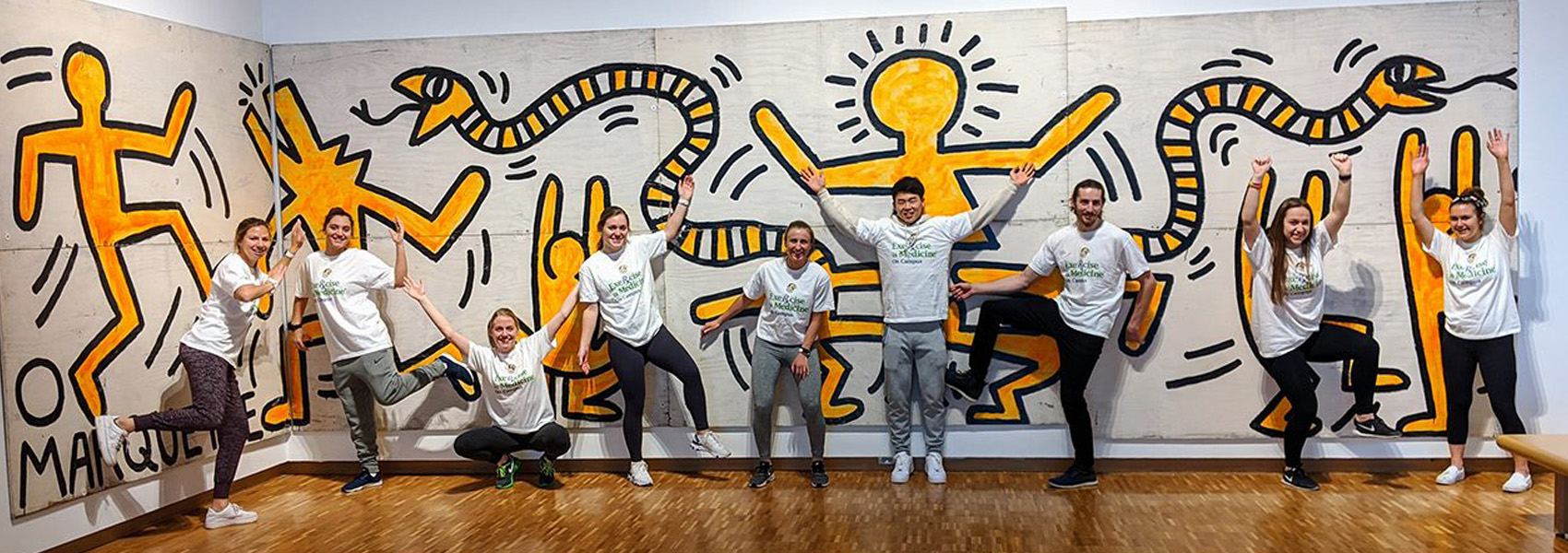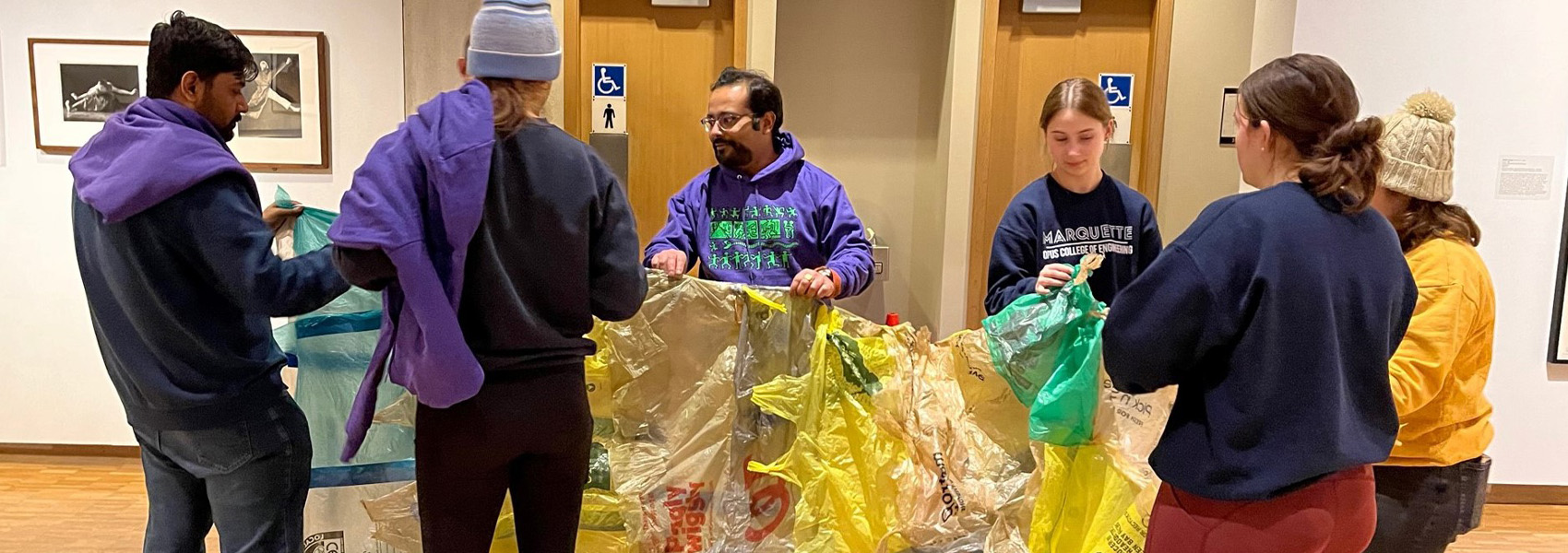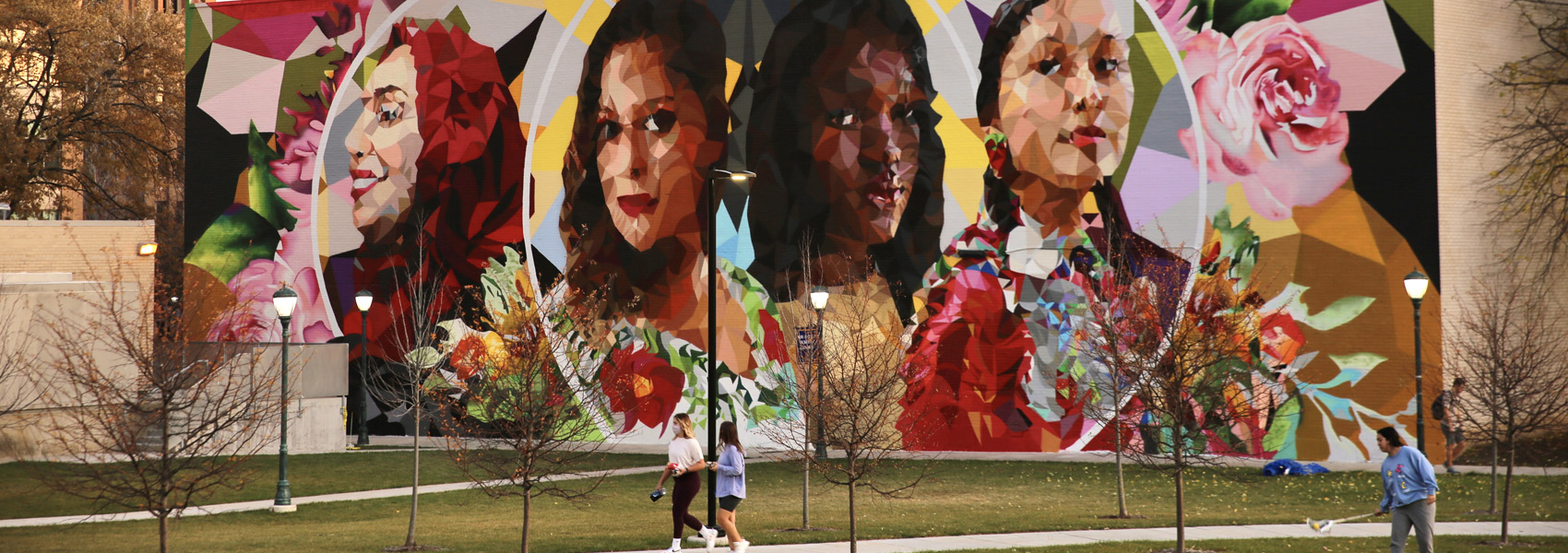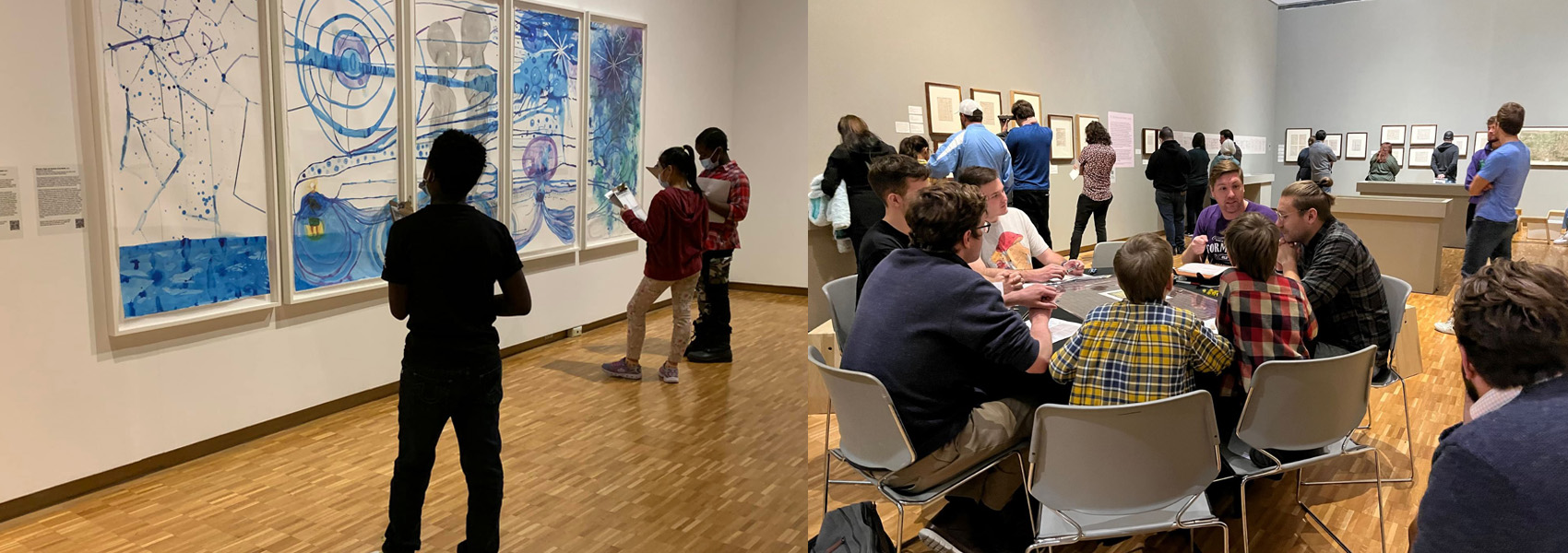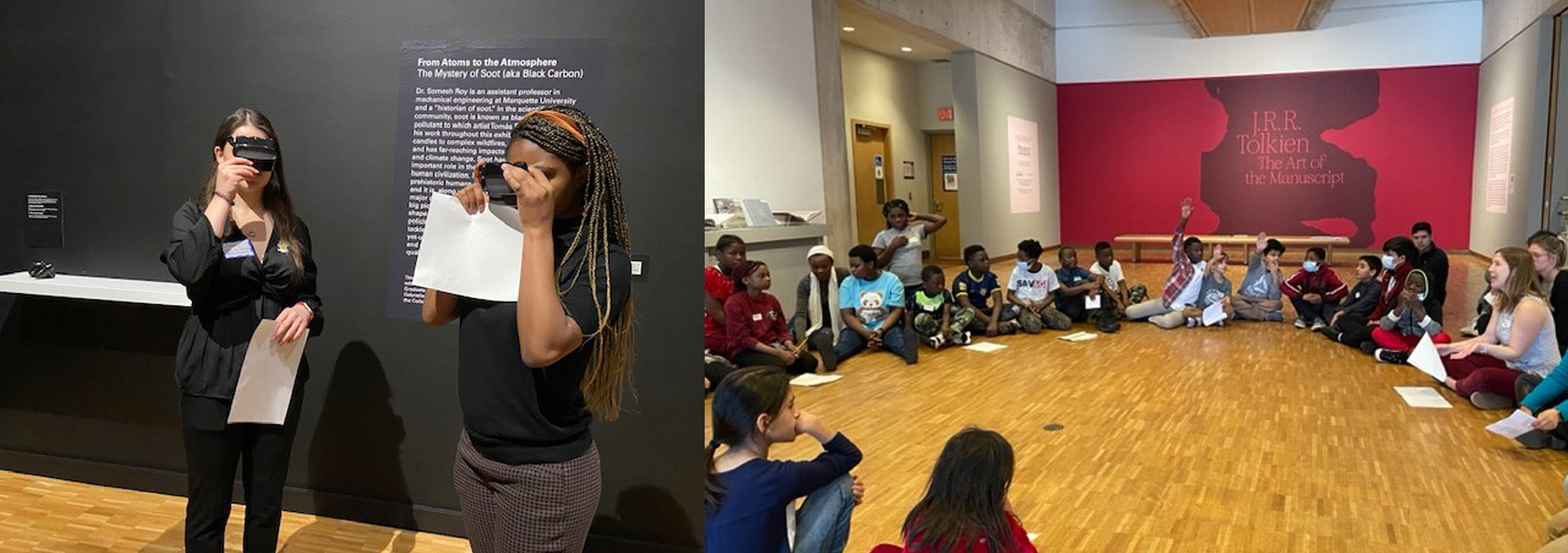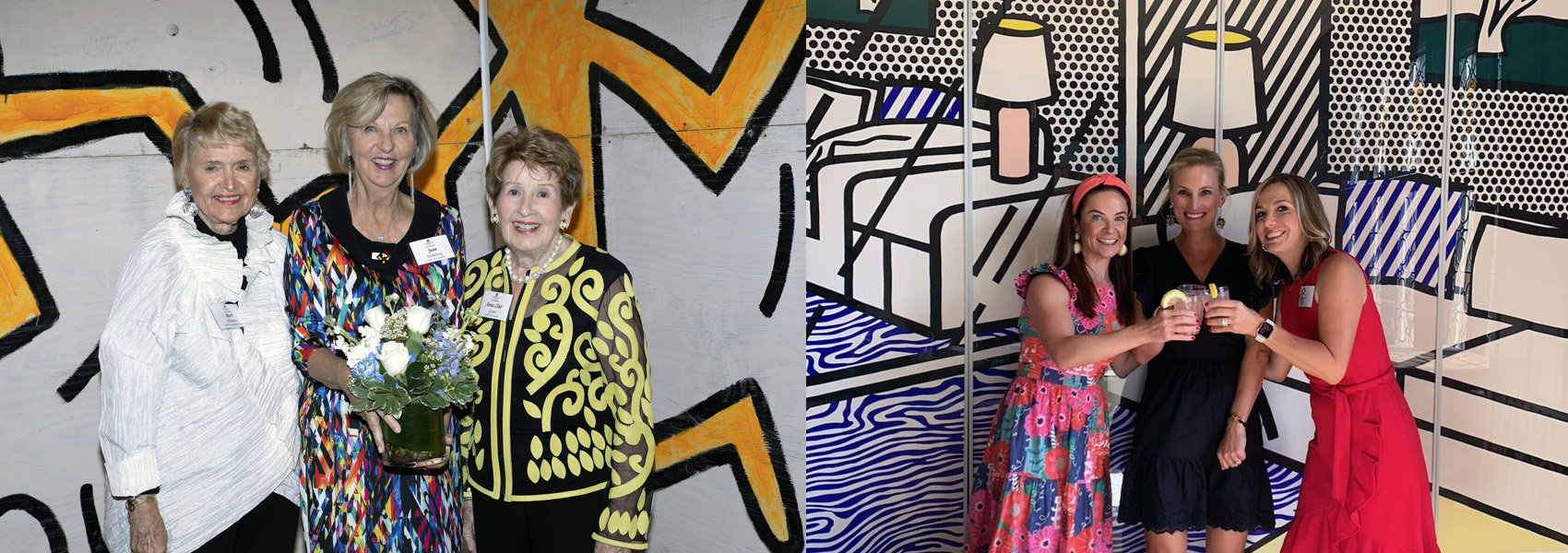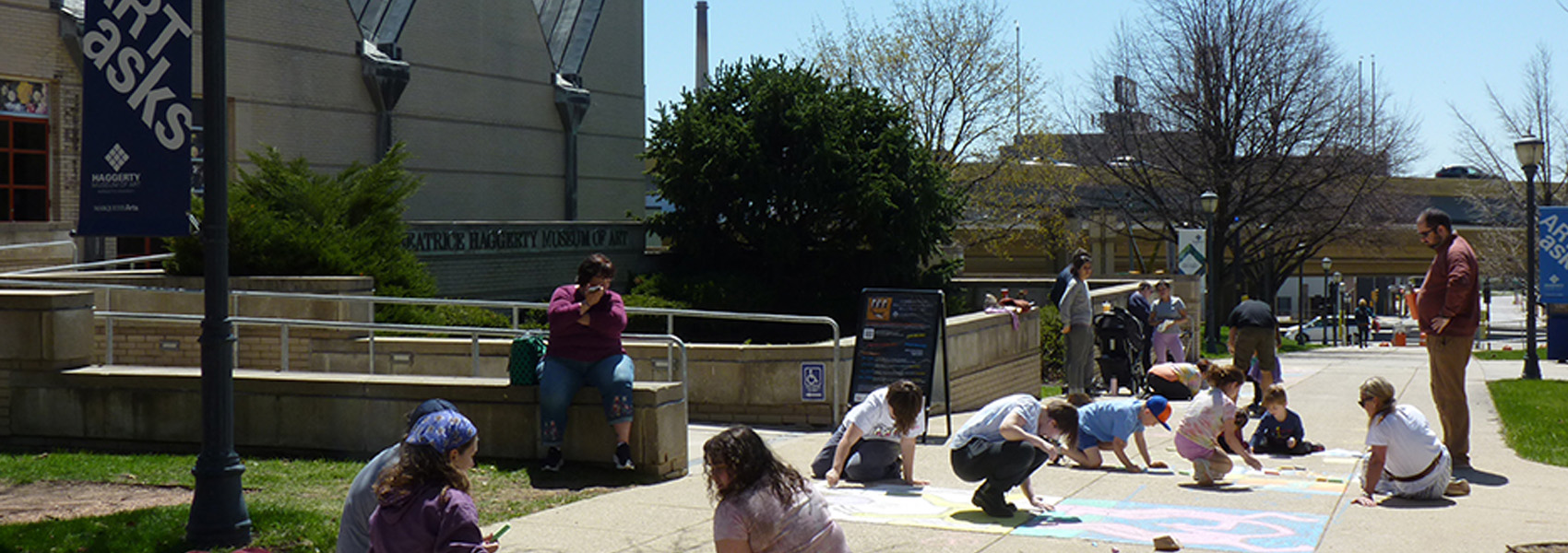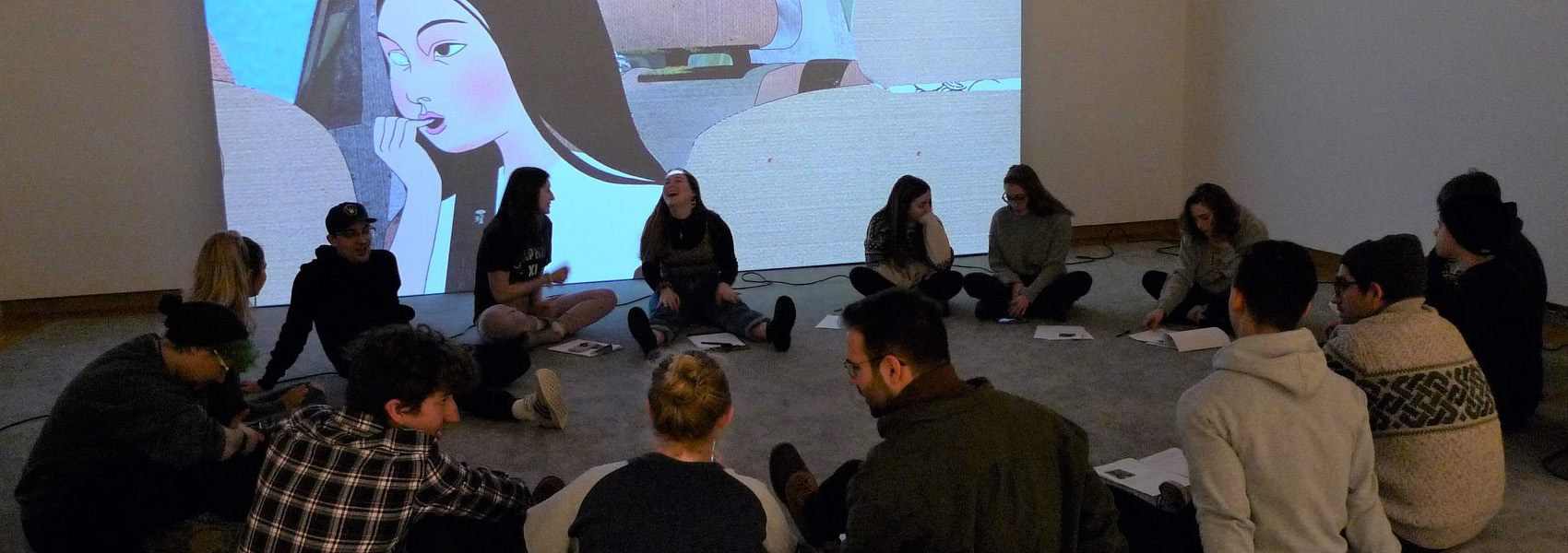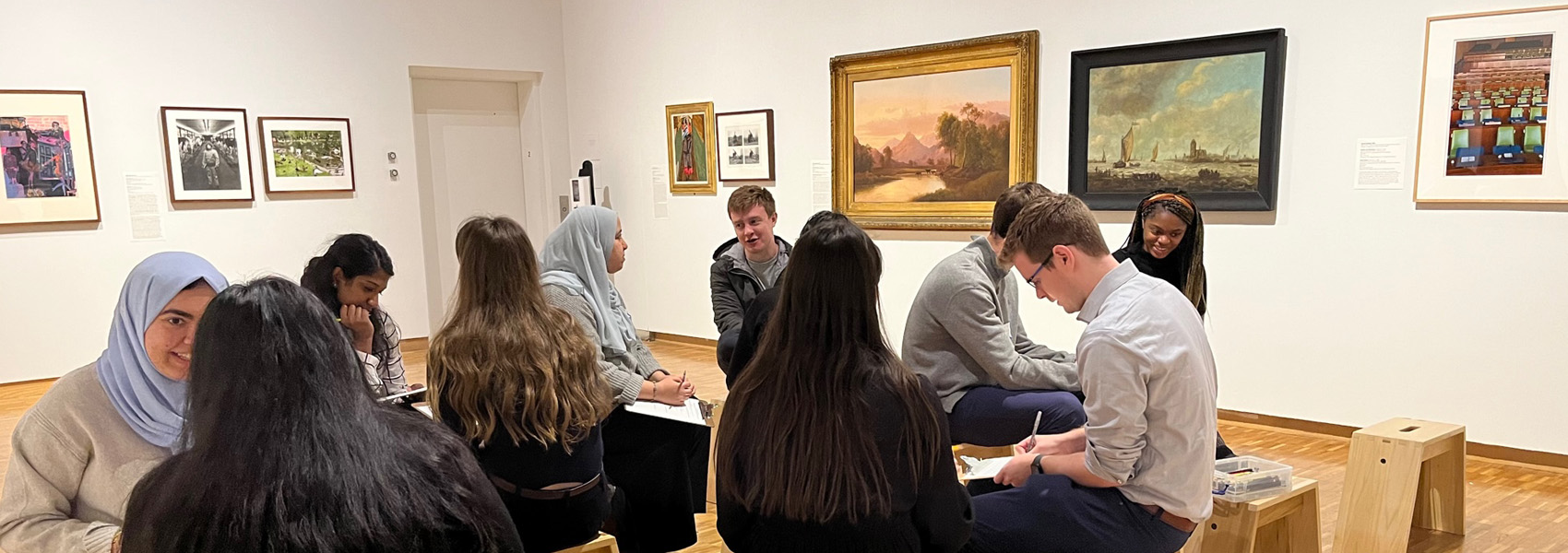Strategic Planning Steering Committee
Co-chairs:
John Su, Vice Provost for Academic Affairs and Student Success, Marquette University
Susan Longhenry, Director and Chief Curator, Haggerty Museum of Art
Members:
Betty Arndt, Friends of the Haggerty Museum of Art Past President
Dr. Heidi Bostic, Dean, Helen Way Klinger College of Art and Sciences and
the College of Education, Marquette University
Christine Fleming, Manager of Community Engagement, Haggerty Museum of Art
Ann Keiper, Friends of the Haggerty Museum of Art President
Rachel Kieselburg, Manager of Museum Administration, Haggerty Museum of Art
Emilia Layden, Curator of Collections and Exhibitions, Haggerty Museum of Art
Dr. Donte McFadden, Senior Associate Director, Undergraduate Research and High Impact Practices (McNair Scholars Program Director), Marquette University
Fred Syrjanen, Friends of the Haggerty Museum of Art Treasurer
Dr. Robert Tatterson, Friends of the Haggerty Museum of Art Past President
Haggerty Museum of Art Staff Members
The following current and former Haggerty Museum of Art staff members participated in, and made important contributions to, the Museum’s strategic planning process.
Kay Antonelli, Art Across Curriculum Educator
Michelle Burton, Registrar
Mary Dornfeld, Marketing and Development Assistant
Christine Fleming, Manager of Community Engagement
Daniel Herro, Head Designer and Preparator
Rachel Kieselburg, Manager of Museum Administration
Emilia Layden, Curator of Collections and Exhibitions
Lynne Shumow, Curator for Academic Engagement
Mary Wagner, Administrative Assistant
MalVy Westbrook, Visitor Experience Associate
Friends of the Haggerty Museum of Art Board Members
The following current and former Friends of the Haggerty Museum of Art board and at-large board members participated in, and made important contributions to, the Museum’s strategic planning process.
Betty Arndt
Philip Babler
Maggie Beckley
Claire Boles
Hugh Dugan
Donna Farrell
Catherine Faught
Anna Clair Gaspar
Curtis Gorrell
Linda Haag
Jean Holmburg
Kate Hookham
Ann Keiper
Carrie Matteson
Christianne Murn
Casey O'Brien
Meghan Posnanski
Maura Rabideaux
Lindsay Ruch
Robert Sobczak
Frederick Syrjanen
Robert Tatterson
Janice Welburn
Rev. Frederick Zagone, S.J.
Action Planning Team Members (in addition to those named in other categories)
Sheena Carey, Internship Coordinator/Lecturer, Marquette University Diederich College of Communication
Clara Dwyer, Executive Director, Alpha Sigma Nu, Marquette University
Averia Flasch, Assistant Director, Project Planning and Development, Office of Research and Sponsored Programs, Marquette University
Dr. Carie Hertzberg, Assistant Dean of Community Service, Director of the Burke Scholarship Program, Marquette University
Patrick Kennelly, Director, Center for Peacemaking, Marquette University
Alisha Klapps, Trinity Fellow, Marquette University
Katherine Kreuchauf, Founder and Principal, OnPoint Philanthropic Consulting
Jay Kutka, Senior University Budget Director, Marquette University
Jen Maney, Director of the Center for Teaching and Learning and Coordinator of the Catholic Jesuit Higher Education Cooperative, Marquette University
Jaclyn Ness, Managing Director, Corporate and Foundation Relations, Marquette University
Emily Raclaw, Director, On Your Marq, Marquette University
Rachelle Shurn, Engagement Officer, Marquette University
Dr. Kantara Souffrant, Curator of Community Dialogue, Milwaukee Art Museum
Dr. Theresa Tobin, Associate Professor of Philosophy and the Director of the Education Preparedness Program (EPP) at the Center for Urban Research, Teaching & Outreach, Marquette University
Participants in the External Assessment
The following people generously offered their time, expertise, and ideas via interviews held during the external assessment phase of the strategic planning process.
Marquette University
Jacqueline (Jacki) Black, Director for Hispanic Initiatives and Diversity & Inclusion Educational Programming
Joya Crear, Acting Vice President for Inclusive Excellence
Ana Garner, Professor and Chair, Department of Journalism and Media Studies
Paul Jones, Vice President for University Relations and General Counsel
Sara Harvey, Senior Philanthropic Advisor, Strategic Initiatives
Leigh van den Kieboom, Associate Professor and Associate Dean, College of Education
Dr. Conor M. Kelly, Associate Professor, Theology Department and Director, Marquette Core Curriculum
Joe Kearney, Dean and Professor of Law
Rev. Gregory J. O'Meara, S.J., Rector of the Jesuit Community at Marquette University and Associate Professor of Law
Dr. Robert S. Smith, Director of the Center for Urban Research, Teaching & Outreach and Harry G. John Professor of History at Marquette University
Amy Souders, Board of Trustees
Darryl Todd, Urban Scholars Coordinator
Dr. Kimo Ah Yun, Provost and Executive Vice President for Academic Affairs
Collaborating Milwaukee K-12 Schools and Community Organizations
Justin Hegarty, Executive Director & Environmental Engineer, Reflo
Joelle Worm, Director, University of Wisconsin-Milwaukee Arts ECO
Donors and Community Members
Laurel Britton, Marquette alum and former Senior Vice President, Revenue and Operations at the Metropolitan Museum of Art
Flavius Cucu, philanthropist
Andre Ghelfi-Thomas, Marquette alum and former Haggerty Museum of Art student employee
Janelle Hines, Vice President, Community Impact, Greater Milwaukee Foundation
Josh Hoppert, Director of Advertising, Milwaukee Record
Marianne Lubar, philanthropist
Polly Morris, Executive Director of Lynden Inc. and the Bradley Family Foundation and Coordinator of the Greater Milwaukee Foundation’s Mary L. Nohl Fund Fellowships for Individual Artists Program
Andy Nunemaker, philanthropist and art collector
John Shannon, philanthropist and Director, Guardian Fine Art Services
Keith Stanley, Executive Director, Near West Side Partners
Julie Tolan, Executive Vice President, Owner of Lauber Business Partners
Jenny Toutant, Chief Education & Engagement Officer, Milwaukee Repertory Theater
Miles Vilski, collector
Zach Willenbrink, attorney


